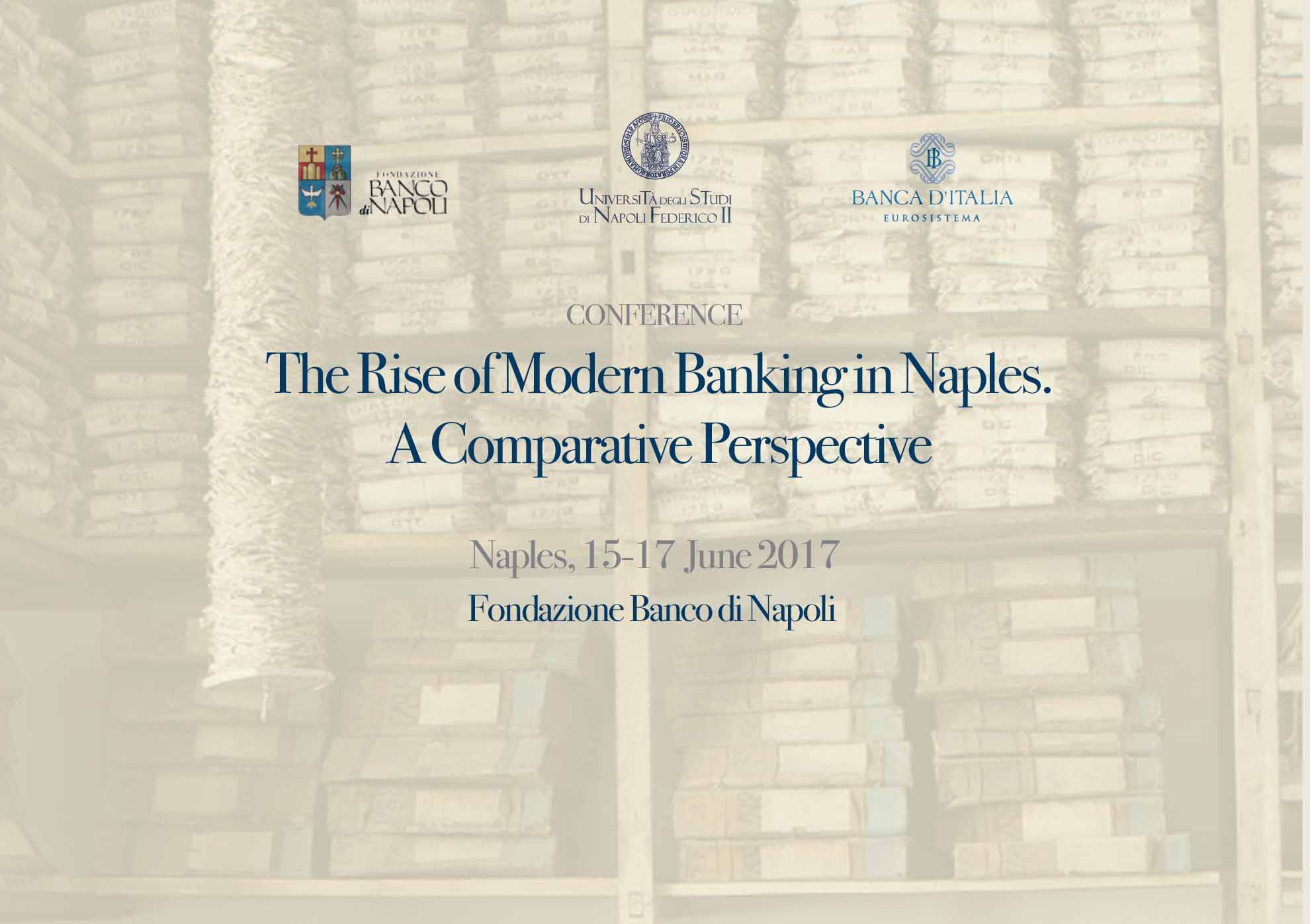
The Rise of Modern Banking in Naples
Molti illustri economisti, storici della finanza ed archivisti converranno da tutto il mondo a Napoli il prossimo giugno, dal 15 al 17, per partecipare al convegno su “The Rise of Modern Banking in Naples. A comparative Perspective”.
Il convegno si terrà nella sede dell’antico Banco dei Poveri, oggi sede della Fondazione Banco di Napoli e del suo imponente Archivio Storico: un patrimonio unico al mondo, 300 sale, milioni di documenti che dal 1560 testimoniano la vita giornaliera degli otto banchi pubblici napoletani e i segreti della loro amministrazione. Nel programma proposto, l’Archivio è non solo l’oggetto, ma il protagonista che, con le sue carte, dà risposte a domande importanti su aspetti costitutivi del sistema economico: quelli monetari e creditizi.
Gli studiosi italiani, statunitensi, francesi, inglesi, irlandesi, portoghesi, austriaci che hanno aderito all’iniziativa scandaglieranno uno dei temi più controversi nella storia e nell’analisi economica: la “magia del credito”; il “mistero” della natura della moneta e della banca. Come nasce la banca moderna e cosa la contraddistingue? Funziona da semplice intermediario tra coloro che danno e coloro che prendono a prestito? O moltiplica il potere d’acquisto a disposizione dell’economia? O, invece, crea potere d’acquisto ex-novo mediante le sue operazioni attive? E ancora: come nascono le banche centrali, e che funzioni svolgono? Quale è il loro ruolo rispetto alla finanza pubblica? Studiare la genesi storica della banca e delle banche centrali moderne consente di dare risposte nuove e illuminanti a queste sempre attuali questioni.
E’ a Napoli – questa è la tesi, supportata dalle carte dell’Archivio Storico – che nasce la circolazione fiduciaria per merito dei banchi pubblici. Questi, insieme alla funzione propria degli agenti economici ortodossi, orientati al profitto, mantengono nei secoli una matrice filantropica: una tradizione ben diversa dall’origine puramente mercantile dominante nella tradizione anglosassone. Si studierà il contesto economico-sociale nel quale nasce la banca moderna (il Regno di Napoli nel periodo Spagnolo), e l’intreccio tra la filantropia dei monti e i motivi mercantili gestiti dai banchi. Il benevolo concorso del potere vicereale, che li legittima, diviene la base per l’impetuoso sviluppo della circolazione fiduciaria, che fin dalla fine del Cinquecento accoppia alla moneta cartacea le forme più moderne dell’erogazione di credito.
I lavori, articolati in quattro sessioni e due tavole rotonde (queste ultime dedicate ad Archivi e ambiente intellettuale), propongono un’analisi comparata delle origini della banca a Napoli e in Europa, e approfondiscono la tematica dell’innovazione finanziaria come risposta alle crisi e alla guerra. L’approdo conclusivo, nell’ultima sessione, propone una riflessione su “presente e passato” che vede opportunamente il Governatore della Banca d’Italia presiedere e concludere i lavori.
Per consultare il programma cliccare qui.
Per la registrazione cliccare qui.
Economists, financial historians and archivists from all over the world will arrive in Naples to participate in the conference entitled, “The Rise of Modern Banking in Naples. A comparative Perspective” from June 15th to 17th, 2017.
The convention will be held at the original site of the ancient Banco dei Poveri, which is now the location of the Banco di Napoli Foundation and its imposing Historical Archive: unique in the world, with 300 rooms containing millions of documents, it bears testimony to the daily life of the eight public banks in Naples and the secrets of their administration over about four centuries. The archive is not only the main focus of the programme, but it also provides the answers to important questions regarding basic aspects of the economic system, namely its monetary and credit features.
Experts from Italy, the United States, France, England, Ireland, Portugal, and Austria, who will participate in the initiative, will deeply analyse one of the most controversial themes of historical and economic analysis: the “magic of credit”; the “mystery” of the nature of currency and banks. How did the modern bank emerge and what are its main characteristics? Is it a simple intermediary between lenders and borrowers? Or does it multiply the purchasing power available within the economy? Or, on the other hand, does it create buying power out of nothing through its active operations? And also: how are central banks created, and what are their functions? What is their role in financing government institutions? Studying the historical genesis of banks and modern central banks allows us to find new and enlightening answers to these questions, which are still relevant today.
It was in Naples – this is the claim, supported by the documents in the Historical Archives – that the first fiduciary circulation was created, thanks to the public banks. These banks, in addition their orthodox, profit-oriented economic activity, maintained a philanthropic identity for centuries: a very different tradition from the purely mercantile origins which dominated the Anglo-Saxon tradition. The social economic context in which the modern bank was created (the Kingdom of Naples under Spanish rule) and the fusion of the philanthropy of the “monti” and the mercantile aspects of the “banchi” will be the central focus of the convention. The benevolent involvement and power of the Spanish Viceroys, who legitimized the banks, became the basis for the impetuous development of fiduciary circulation, which from the end of the 1500s connected the use of paper money to the issue of the most modern forms of credit.
There will be four sessions and two roundtable discussions (the latter dedicated to archives and the intellectual environment) which will provide comparative analyses of the origins of banks in Naples and Europe, and will explore themes of financial innovation as an answer to crises and wars. The final topic in the last session will center on reflections on the links between “past and present”, which will appropriately be conducted and concluded by the Governor of the Banca d’Italia.
